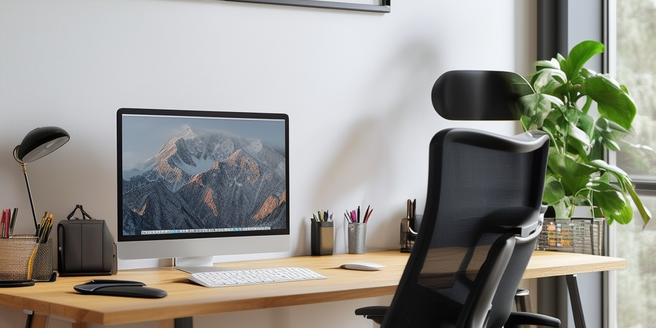
Understanding the Importance of a Routine in Remote Work
Maintaining a consistent daily routine when working remotely is crucial, as the lack of a traditional office structure may lead to mismanagement of time and tasks, subsequently affecting productivity. In an office setting, there are various indications of work start, end times, and breaks, along with social cues to gauge progress, which are absent in remote work.
Additionally, a well-regulated routine offers a balanced approach to work and personal life, enhancing overall wellbeing. Remote working, which blurs professional and personal spaces, can cause an imbalance as it is easy to devote excessive hours to work; our work schedules require careful attention.
Setting a routine not only establishes normality and consistency, proving beneficial for mental and physical health, but also prevents overworking, thus avoiding negative health impacts. A steady routine provides a tool for efficient time management, work-flow maintenance, and securing a healthy work-life balance in the complex landscape of remote work. So, as the work landscape rapidly transitions, establishing and maintaining healthy routines is essential.
Identifying Your Work Flow: Setting Goals and Defining Tasks
Building a successful routine requires understanding your personal workflow, identifying tasks, and breaking them into smaller components to make them less daunting. Prioritizing these tasks according to their importance and setting deadlines facilitates efficient resource allocation towards the most impactful tasks. It may be tempting to copy successful people’s routines but remember, aligning your routine with your unique productivity rhythm, our ‘biological clock’ that varies from individual to individual, leads to sustainable productivity. This understanding, combined with arranging tasks in line with your workflow sets you up for success. Drafting a schedule that resonates with your productivity rhythm may require adjustments, but ultimately boosts efficiency and effectiveness. Thus, a personalized routine becomes a cornerstone of productivity, enabling you to work smarter, not harder.
Creating a Structured Routine: Key Elements and Scheduling
Establishing a consistent routine is key when managing your time at home, including specific times for waking up, starting work, and winding down. Start by waking up at a fixed time each day to align with your day’s activities. Set clearly defined working hours to bring focus and discipline to your home workspace. Additionally, include an unwinding time in your routine, ensuring a good work-life balance.
Incorporate regular breaks and personal time into your routine to prevent burnout and boost creativity. Ideally, schedule mentally demanding tasks during your peak productive hours to maximize efficiency.
When planning your daily schedule, assess the vital parts of your work and personal life and allocate the appropriate time accordingly. Give consideration to task deadlines, collaborations, family responsibilities, and personal goals.
Remember, a structured routine is the secret to effective time management, helping distribute your attention between work and personal commitments, ensuring neither is neglected. It fosters improved productivity and work-life balance. Therefore, with effective routine management, you can truly master working from home.
Implementing Your Routine: Time Management and Productivity Tools
The significance of thorough implementation is a cardinal rule in goal attainment; it merges effective utilization of given resources alongside careful time, task, and goal management. Be it digital timers, project management applications, or reminders, these tools can vastly improve your productivity by providing structure and organization, streamlining workflows, and assisting with deadline adherence.
Time set for regular progress reviews is another crucial component, allowing the assessment of your effectiveness and performance at intervals that suit your needs. It’s vital to remember that a routine, while serving as a productivity-enhancing guide, is not meant to be rigid or restrictive of work and personal changes.
The implementation of a flexible routine can adapt to workflow fluctuations and personal circumstances, propelling productivity. By serving as a tool rather than a limitation, it helps structure your day and tasks, offering a solid foundation for a booming and efficient working environment.
Assessing and Adjusting Your Remote Work Routine: Continuous Improvement
Establishing and maintaining a routine is an ongoing journey that requires your attention and consistent reassessment. It’s crucial to check every few weeks if your current routine serves your needs, helps achieve your set goals in the timeframe and helps maintain a work-life balance. If the answer is ‘No’ to any of these questions, it’s a sign that your routine needs recalibration. Remember, it’s all about progressing towards a state of constant improvement for enhanced productivity and wellbeing. The ultimate goal is a routine that aids productivity without compromising wellbeing. This is a process of continuous self-evaluation and tweaking until your schedule functions as an efficient tool to manage your time and tasks.
